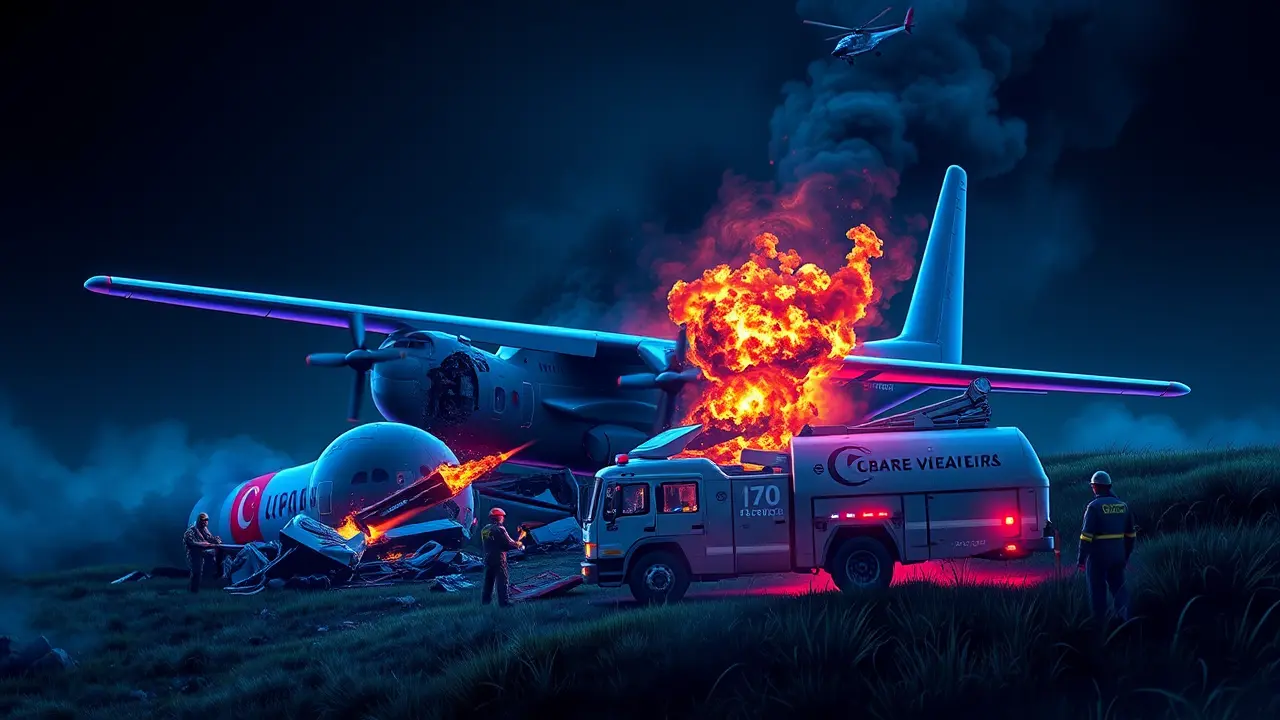
Otheraccidents & disastersTransport Disasters
Turkish Military Plane Crashes in Georgia with Casualties.
JO
John Parker
3 hours ago7 min read4 comments
A Turkish C-130 military cargo plane carrying at least twenty personnel crashed in Georgia on Tuesday, marking a devastating aviation incident that has immediately drawn international emergency response and investigative teams to the rugged terrain near the Azerbaijan border. The aircraft, which had taken off from Azerbaijan, went down under circumstances that remain shrouded in uncertainty, with official confirmation on the exact number of casualties and the cause of the crash still pending as rescue operations continue amidst the wreckage.Initial video footage from the scene paints a grim picture of the aftermath: chunks of twisted metal are scattered across a grassy knoll, with sections of the fuselage still engulfed in flames and dark, acrid smoke billowing into an otherwise clear sky, a stark visual contrast that underscores the sudden violence of the event. On the ground, fire engines are positioned nearby, their crews battling the persistent blazes, while a helicopter circles overhead, its whirring blades adding to the cacophony of a coordinated disaster response effort now fully mobilized.This tragedy immediately recalls the fraught history of military aviation safety in the region, where similar incidents involving transport aircraft have previously highlighted the immense risks inherent in complex logistical and training missions. The C-130 Hercules, a workhorse of air forces worldwide renowned for its reliability, now becomes the focal point of intense scrutiny; its operational history, maintenance records, and the specific mission profile will be dissected by investigators from multiple nations, including likely participation from Turkish, Georgian, and potentially NATO-affiliated experts given Turkey's membership in the alliance.The geopolitical context cannot be ignored; the crash site's proximity to the Azerbaijan border injects a layer of diplomatic sensitivity into an already tense situation, requiring careful coordination between Ankara and Tbilisi as they navigate the logistics of recovery and the shared imperative of determining whether mechanical failure, human error, or external factors precipitated this disaster. Eyewitness accounts, though still fragmentary, describe a sudden loss of altitude and an attempted emergency maneuver before impact, suggestions that will form the initial hypotheses for the official inquiry.The human cost is, of course, the central tragedy; each of the twenty souls on board represents a family plunged into uncertainty, a military unit facing a profound loss, and a nation awaiting answers. As the sun sets on the crash site, the immediate focus remains on recovery and identification, a painstaking process that will yield the first hard facts in a narrative currently dominated by shock and speculation. The broader implications for regional military cooperation and air safety protocols will undoubtedly be a subject of high-level discussion in the days to come, as this incident serves as a somber reminder of the ever-present dangers faced by those who serve in uniform, regardless of nationality.
#featured
#Turkish military plane crash
#Georgia
#casualties
#Azerbaijan border
#aviation incident
#investigation
Stay Informed. Act Smarter.
Get weekly highlights, major headlines, and expert insights — then put your knowledge to work in our live prediction markets.
© 2025 Outpoll Service LTD. All rights reserved.